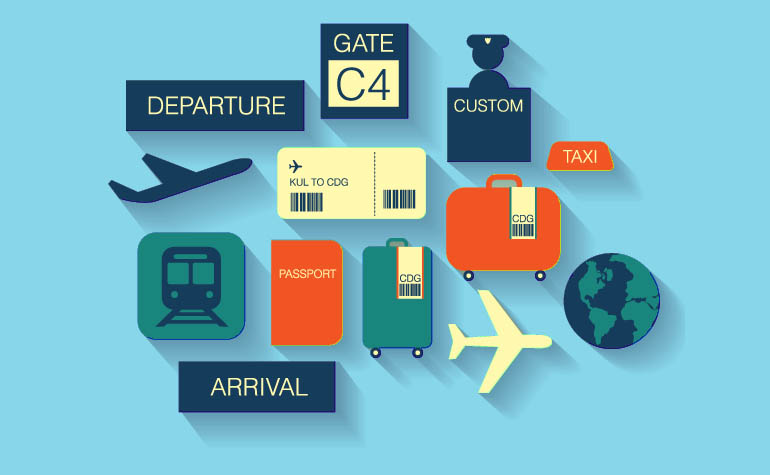When we think about travel, we often focus on the destination—the city, the coastline, the view from the top. But how you get there matters more than you might realize. The mode of transportation you choose doesn’t just move you between places—it shapes your mindset, your pace, and even how you remember the trip.
From planes and trains to ships and long drives, here’s how the journey itself becomes part of the story.
Air travel: fast, functional, and sometimes disorienting
Flying is the most common way we get around, especially for long distances. It’s efficient and necessary, but it also compresses time and space in a way that can leave us disoriented.
You leave home, blink, and suddenly you’re somewhere new—with no real sense of the land or culture between point A and point B. Airports, while marvels of logistics, are designed for transit, not connection.
Still, there are moments that redeem it: the hush of a pre-dawn terminal, the moment the wheels lift off the runway, the view of a city lit up from above. Air travel offers speed—but rarely presence. It’s best when used in balance with slower, more grounded forms of movement.
Trains: the beauty of forward motion
Train travel invites you to sit still while the world moves around you. There’s a rhythm to it—the hum of the track, the sway of the cars, the quiet observation of landscapes as they unfold through the window.
It allows for transitions. You watch cities fade into suburbs, then fields, then mountains. You notice how people live between destinations. You arrive not with the abruptness of a plane landing, but with the soft sense of having followed a path.
In Europe and parts of Asia, trains are more than transport—they’re part of the cultural experience. You share cars with strangers, grab snacks from a trolley, and feel a sense of journey that’s both practical and poetic.
Cars and road trips: freedom and control
There’s something uniquely empowering about traveling by car. You decide the route. You stop when you want. You control the soundtrack and the snacks.
Road trips offer intimacy with a region. You notice roadside attractions, overhear local radio, and make spontaneous turns. Even traffic or wrong turns can become part of the narrative—frustrating in the moment, but memorable in hindsight.
Driving also gives you access to places that other forms of transport can’t reach: remote trails, hidden beaches, dusty backroads. It’s imperfect and sometimes exhausting—but it’s yours, mile by mile.
Cruising: movement without stress
Cruising offers a different kind of travel energy. You’re moving, but you don’t have to manage the logistics. Meals appear. Rooms are ready. Ports of call come to you. And in between, the ocean stretches out, offering room to reflect and reset.
A cruise is one of the few forms of transportation that’s also a destination. You’re not just getting somewhere—you’re being somewhere, even while in motion.
On a Southern Caribbean cruise, for example, you drift between islands, each one unique, each one a soft landing. And while the beaches and excursions are part of the appeal, so is the ship itself—its quiet mornings, slow dinners, and long walks on the upper deck. Cruising adds stillness to movement in a way few other forms of travel can.
Ferries and boats: arrival as experience
There’s something special about approaching a place by water. Whether it’s a slow ferry weaving between islands or a riverboat pulling into a historic town, the arrival feels cinematic.
The city reveals itself from a new perspective—domes, rooftops, and harbors rising into view. You’re not dropped in—you’re welcomed.
These forms of travel remind us that destinations don’t begin at their borders. They begin in the anticipation, the approach, the way the air feels when you first see land after open water.
Walking and biking: full immersion
Sometimes the best way to experience a place is with your own two feet. Walking and biking slow you down to the speed of detail. You notice textures, sounds, and smells you’d miss in a vehicle. You see the way sunlight hits a sidewalk café, or the way someone hangs their laundry on a balcony.
Self-powered travel creates a different relationship with your surroundings. You’re not just observing—you’re participating. And that brings a depth of memory that lingers long after the trip ends.
The way you move shapes the way you remember
The most memorable travel moments often have little to do with arrival times or amenities. They’re about how the journey made you feel. Were you rushed? Were you curious? Did you see the land shift as you moved through it?
Choosing how you get somewhere is more than a logistical decision—it’s an emotional one. So the next time you plan a trip, pause and consider not just where you’re going, but how you want to feel along the way.
Because sometimes, the way you travel is what makes the destination unforgettable.


